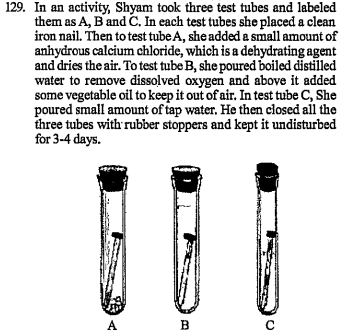Which of the following statements is CORRECT ?
The product of two negative integers is always less than both the integers
The additive inverse of a negative integer is negative .
Multiplicative inverse of 5 is 15.
The difference between an integer and its additive inverse is always odd.
The correct Answer is:C
To determine which of the following statements is correct, we will analyze each statement one by one.
1. Evaluate Statement 1: "The product of two negative integers is always less than both the integers."
- Let’s take two negative integers, for example, -2 and -3.
- The product of -2 and -3 is:
(−2)×(−3)=6
- Here, 6 is greater than both -2 and -3.
- Therefore, Statement 1 is incorrect.
2. Evaluate Statement 2: "The additive inverse of a negative integer is negative."
- The additive inverse of a number x is defined as the number that, when added to x, results in 0.
- If we take a negative integer, say -4, its additive inverse is:
−(−4)=4
- Since 4 is positive, Statement 2 is incorrect.
3. Evaluate Statement 3: "The multiplicative inverse of 5 is 1 by 5."
- The multiplicative inverse of a number x is defined as the number that, when multiplied by x, gives 1.
- For 5, the multiplicative inverse is:
15
- Therefore, Statement 3 is correct.
4. Evaluate Statement 4: "The difference between an integer and its additive inverse is always odd."
- Let’s take an integer, say 3. Its additive inverse is -3.
- The difference is:
3−(−3)=3+3=6
- Since 6 is even, Statement 4 is incorrect.
Conclusion:
After evaluating all statements, we find that the only correct statement is:
- Statement 3: "The multiplicative inverse of 5 is 1 by 5."
Final Answer:
The correct statement is Option 3.
---
- Let’s take two negative integers, for example, -2 and -3.
- The product of -2 and -3 is:
(−2)×(−3)=6
- Here, 6 is greater than both -2 and -3.
- Therefore, Statement 1 is incorrect.
- The additive inverse of a number x is defined as the number that, when added to x, results in 0.
- If we take a negative integer, say -4, its additive inverse is:
−(−4)=4
- Since 4 is positive, Statement 2 is incorrect.
- The multiplicative inverse of a number x is defined as the number that, when multiplied by x, gives 1.
- For 5, the multiplicative inverse is:
15
- Therefore, Statement 3 is correct.
- Let’s take an integer, say 3. Its additive inverse is -3.
- The difference is:
3−(−3)=3+3=6
- Since 6 is even, Statement 4 is incorrect.
After evaluating all statements, we find that the only correct statement is:
- Statement 3: "The multiplicative inverse of 5 is 1 by 5."
The correct statement is Option 3.
Topper's Solved these Questions
- IMO QUESTION PAPER 2017-18 SET - BBOOK - SCIENCE OLYMPIAD FOUNDATION CHAPTER - IMO QUESTION PAPER 2017-18 SET - BEXERCISE - EVERYDAY MATHEMATICS
10 Videos
- IMO QUESTION PAPER 2017-18 SET - BBOOK - SCIENCE OLYMPIAD FOUNDATION CHAPTER - IMO QUESTION PAPER 2017-18 SET - BEXERCISE - ACHIEVERS SECTION
5 Videos
- IMO QUESTION PAPER 2017-18 SET - ABOOK - SCIENCE OLYMPIAD FOUNDATION CHAPTER - IMO QUESTION PAPER 2017-18 SET - AEXERCISE - EVERYDAY MATHEMATICS
15 Videos
- IMO QUESTION PAPER 2018-19 SET ABOOK - SCIENCE OLYMPIAD FOUNDATION CHAPTER - IMO QUESTION PAPER 2018-19 SET AEXERCISE - Achievers section
5 Videos
Similar Questions
Knowledge Check
Which of the following statement is correct
 Anails in test tube A and B have not rusted while test tube C has rustedBnails in test tube A nad C have not rusted while test tube B has rustedCnails in all the three test tubes have not rustedDnails in all the three test tubes have rusted
Anails in test tube A and B have not rusted while test tube C has rustedBnails in test tube A nad C have not rusted while test tube B has rustedCnails in all the three test tubes have not rustedDnails in all the three test tubes have rustedWhich of the following statement is correct
ATwo isobars always have the same mass numberBTwo isotopes always have the same mass numberCTwo isotones always have same mass numberDTwo isobars always have same atomic numberWhich of the following statement is correct?
ANon renewable resources can never be replaced once they get used upBNon renewable resources can be replaced in million of yearsCNon renewable resources can be replaced in 50-100 years.DNon renewable resources can be replaced in 100-200 years
